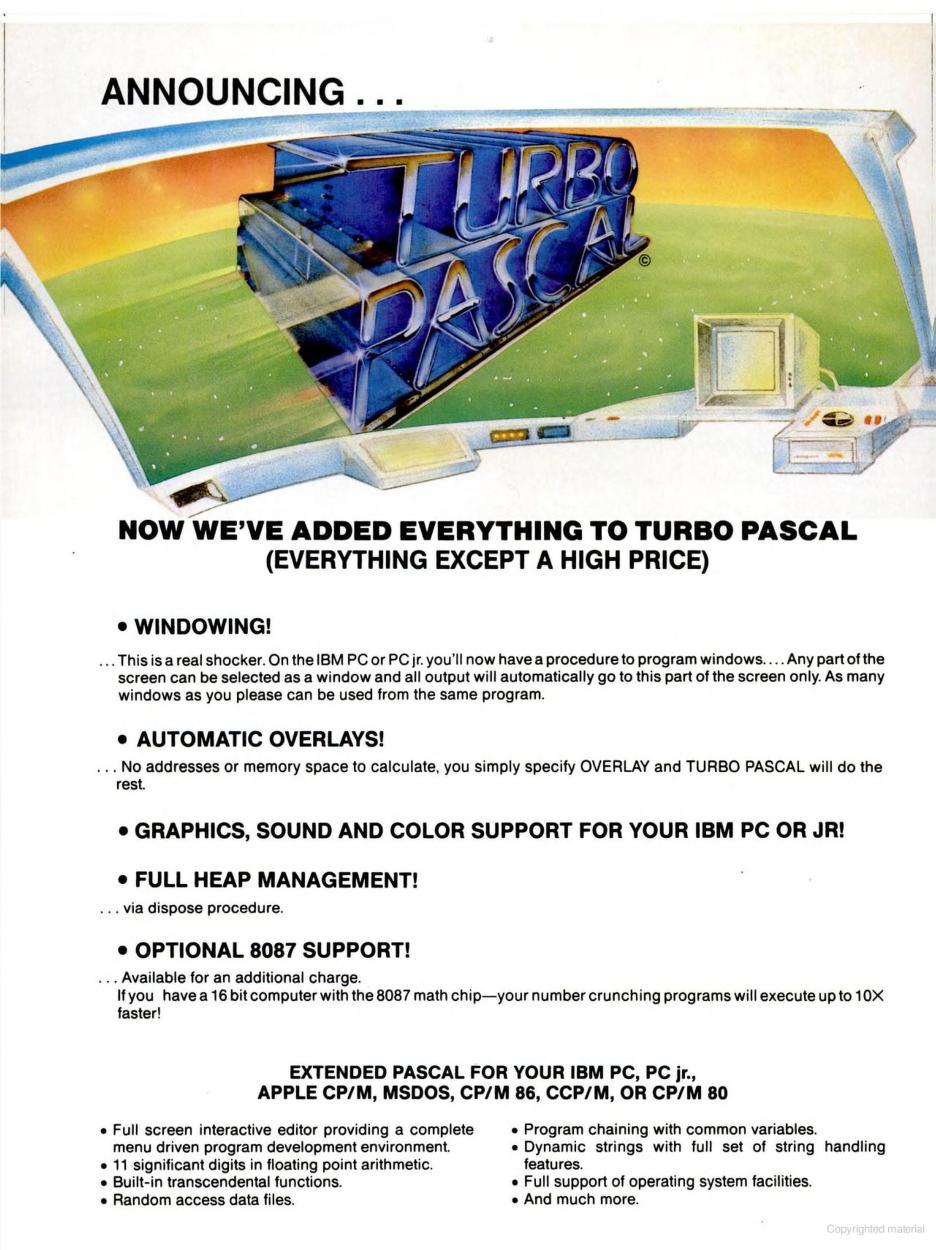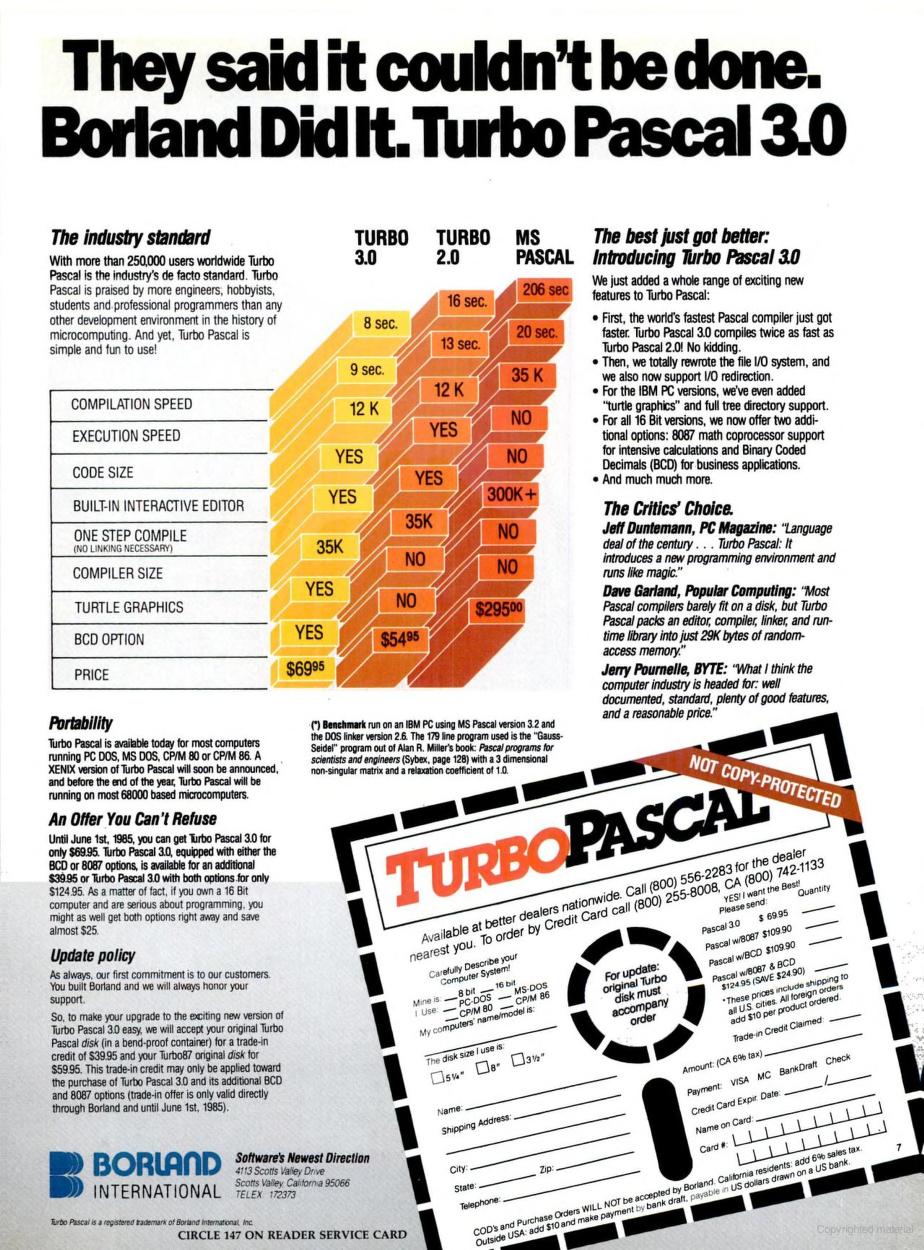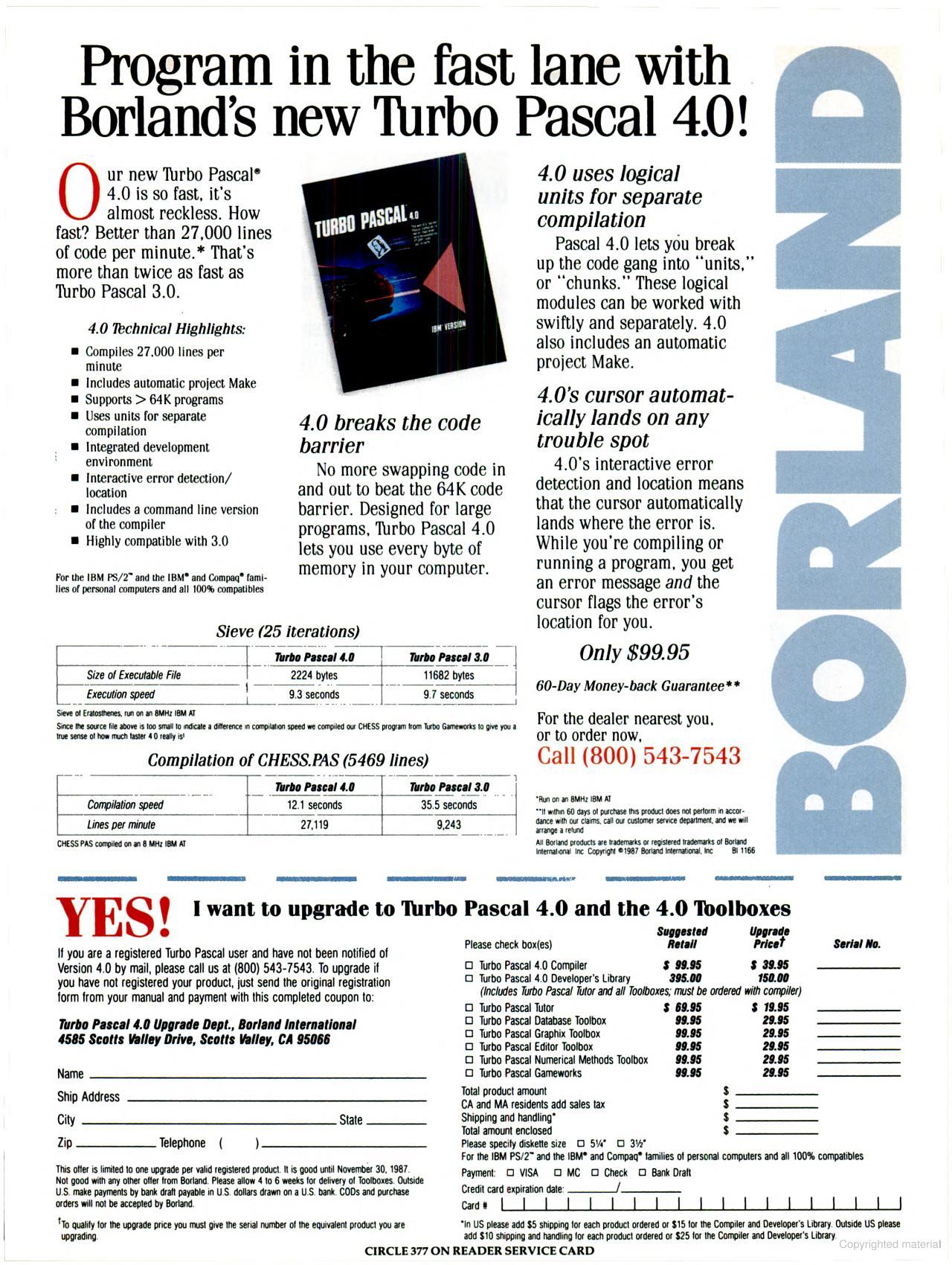Borland International, Inc.
Turbo Pascal
Turbo Pascal began life as Compas Pascal, written by Anders Hejlsberg, and sold commercially in Scandinavia.
One of the most popular features of Borland's compilers was that they featured an IDE, or Integrated Development Environment. At the time, some referred to these as "Edit-Compile-Run" development environments. While it may not seem any better than, say, GWBASIC, in these days a compiler was a professional tool and it was more typical to use your favourite text editor (like Brief) to write code and then run the compiler and linker from the command-line to create a .EXE file. Within the IDE you could write and format your source code, configure all of the compiling options such as memory usage and then either run it "in-memory" or compile it to an executable. When compiling, it would create an object code file as well - an intermediate file between the high-level language you program in and the binary executable file. These would have a .OBJ file extension.

Borland Turbo Pascal version 4.0
In late 1987, Borland released version 4.0 of Turbo Pascal.
In 1988 Borland released a series of complementary "Turbo Toolboxes" that would work with Turbo Pascal, including:
- Turbo Pascal Database Toolbox
- Turbo Pascal Graphix Toolbox
- Turbo Pascal Editor Toolbox
- Turbo Pascal Numerical Methods Toolbox
- Turbo Pascal Gameworks
The compiler could be bought together with the toolboxes if you bought the Turbo Pascal 4.0 Developer's Library, which also bundled in Turbo Pascal Tutor. In December of this year, Turbo Pascal 5.0 was the 7th best-selling software package on the market. Ahead of it were Lotus 1-2-3 2.01, Quicken 2.0, WordPerfect 5.0, PC Tools Deluxe 4.3, dBase III Plus 1.1, and Fastback Plus 2.01.



